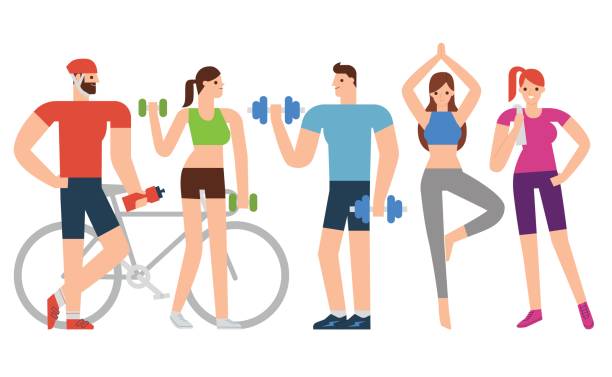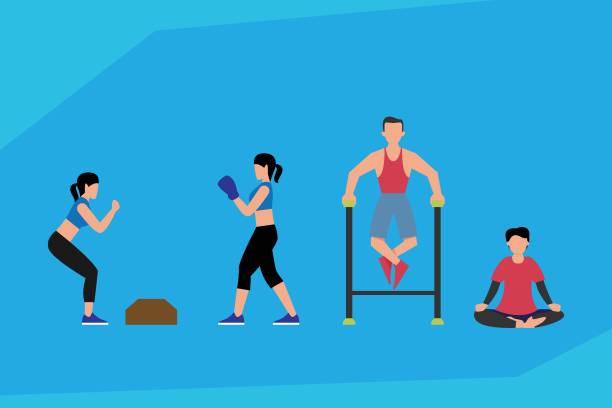Staying fit after 40 may seem like a tough challenge, but it doesn’t have to be. With the right mindset and approach, you can not only maintain your fitness but also make improvements. As we get older, our bodies go through natural changes, which means we may need to adjust our workout routines. The great news is that staying fit after 40 is entirely achievable!
In this post, we’ll offer expert tips and advice on how to stay strong, active, and healthy as you age, so you can continue enjoying a high quality of life.
Why Staying Fit After 40 is Important
As we age, our muscle mass decreases, and our metabolism slows down, making it more challenging to stay fit. However, regular physical activity can help slow these changes and keep you feeling strong and healthy. Staying fit not only helps maintain a healthy weight but also boosts your energy levels, improves your mental well-being, and lowers the risk of chronic conditions like heart disease, diabetes, and osteoporosis.
A study from the National Institute on Aging reveals that consistent exercise can add years to your life and enhance the quality of your aging process. By making fitness a priority after 40, you’re investing in better health and setting yourself up for a more active, fulfilling future.

Understanding the Physical Changes After 40
Before diving into the best ways to stay fit, it’s important to understand the physical changes that happen after 40. These changes affect how your body responds to exercise and can help guide the adjustments you may need to make:
- Muscle Mass Loss: Starting around age 30, we lose about 3-8% of our muscle mass every decade, and this process speeds up after 40. This can make it harder to maintain strength and muscle tone.
- Slower Metabolism: As hormonal changes take place, your metabolism naturally slows down, which makes it easier to gain weight and harder to lose it.
- Joint and Bone Health: As we age, bone density decreases, which can raise the risk of fractures and joint pain. Keeping your bones and joints healthy becomes more important.
- Decreased Flexibility: Your body’s range of motion tends to decrease with age, making stretching and mobility exercises essential for maintaining flexibility and preventing injury.
By understanding these changes, you can adapt your fitness routine to meet your body’s needs and continue to stay active, healthy, and strong.
Fitness Tips for Staying Active After 40
Now, let’s explore some practical and effective tips for staying fit after 40. Whether you’re just beginning your fitness journey or looking to make adjustments to your current routine, these strategies will help you maintain your health and stay active. By following these tips, you can improve your fitness, boost your energy, and keep your body strong for years to come.
1. Focus on Strength Training
One of the most important elements of staying fit after 40 is strength training. As we age, building and maintaining muscle mass becomes more essential than ever. Strength training can help counteract muscle loss, boost metabolism, and protect bones from weakening.
- Start Slow: If you’re new to strength training, begin with bodyweight exercises like squats, lunges, and push-ups to build a solid foundation.
- Incorporate Weights: Gradually introduce dumbbells or resistance bands to increase the challenge and further strengthen your muscles.
- Frequency: Aim for at least two strength training sessions each week to see the best results.
According to Harvard Health Publishing, strength training not only helps preserve lean muscle mass but also keeps your metabolism functioning at an optimal rate, helping you stay fit and healthy as you age.
2. Incorporate Cardio for Heart Health
Cardiovascular exercise is crucial for maintaining heart health, and it’s never too late to start. As you age, your heart and lungs can become less efficient, but regular cardio can help improve circulation, endurance, and overall heart function.
- Walking: Begin with brisk walking for 30 minutes, at least five days a week. It’s an easy and effective way to get your heart pumping.
- Cycling: Whether on a stationary bike or cycling outdoors, this activity offers an excellent low-impact cardio workout that’s easy on the joints.
- Swimming: If you have joint issues, swimming provides a gentle yet powerful way to improve cardiovascular fitness without putting strain on your body.
The American Heart Association recommends getting at least 150 minutes of moderate-intensity cardio each week to support a healthy heart and reduce the risk of heart disease.
3. Prioritize Flexibility and Mobility
Maintaining flexibility is essential for staying fit after 40. As we age, muscles and joints naturally become stiffer, which can affect your movement. Regular stretching helps improve flexibility, increase mobility, and reduce the risk of injuries.
- Yoga: Practicing yoga is an excellent way to enhance flexibility, balance, and overall body strength. It also helps reduce stress and improve mental clarity.
- Dynamic Stretching: Incorporate stretches that involve movement, such as leg swings or arm circles, before your workouts to warm up muscles and prepare your body for exercise.
- Static Stretching: After your workout, hold stretches for 20-30 seconds to help improve flexibility and aid in muscle recovery.
Regular stretching can not only improve your range of motion but also keep you feeling agile and reduce muscle tightness, making it easier to stay active and injury-free as you age.he risk of falls, improve posture, and help you stay active without discomfort.

4. Mix Up Your Routine with Variety
Variety is key when it comes to staying fit. Repeating the same exercises day after day can lead to plateaus and boredom, making it harder to stay motivated. Mixing up your routine keeps your body challenged and your workouts engaging.
- Try New Activities: Explore activities like hiking, dancing, or Pilates to keep things exciting and work different muscle groups.
- Cross-Training: Combine strength training, cardio, and flexibility exercises to create a well-rounded fitness routine that targets all areas of fitness.
By adding variety to your workouts, you’ll not only keep them interesting, but you’ll also engage different muscle groups, which helps prevent overuse injuries and promotes balanced muscle development.
5. Prioritize Rest and Recovery
Rest is just as important as exercise, especially as we get older. Your body needs time to recover after workouts to avoid overtraining and reduce the risk of injury. Pushing yourself too hard without proper recovery can lead to burnout, which can slow down your fitness progress.
- Get Enough Sleep: Aim for 7-9 hours of sleep each night to help your muscles recover and keep your energy levels high.
- Rest Days: Make sure to incorporate at least one or two rest days into your weekly routine to give your body the time it needs to recover and repair.
A study from The National Sleep Foundation shows that getting enough sleep improves muscle recovery and supports overall physical health, making it an essential part of your fitness journey.
6. Focus on Nutrition
What you eat plays a crucial role in your fitness, especially after 40. A well-balanced diet helps support muscle growth, boosts energy, and speeds up recovery, allowing you to stay active and healthy.
- Protein: Make sure you’re getting enough protein to maintain muscle mass. Good sources include lean meats, beans, lentils, and tofu.
- Healthy Fats: Omega-3 fatty acids from fish like salmon, as well as seeds and nuts, help reduce inflammation and support heart health.
- Complex Carbs: Choose whole grains, fruits, and vegetables to provide your body with sustained energy and improve overall endurance.
According to the Harvard T.H. Chan School of Public Health, a nutrient-rich diet is vital for aging well, supporting a strong immune system, and maintaining overall health as you grow older.
7. Stay Consistent
The key to staying fit after 40 is consistency. It’s not about being perfect, but about creating healthy habits that will keep you moving and feeling great over time. Set realistic goals that are achievable, track your progress, and remember that it’s okay if you miss a workout every once in a while. The most important thing is to keep going, even when life gets busy. Staying consistent will help you stay on track and make fitness a natural part of your routine.

Mental and Emotional Wellbeing
Fitness isn’t just about the body; it’s also about taking care of your mind. As we age, mental and emotional health become just as important as physical health for overall well-being.
- Stress Management: Practice relaxation techniques like meditation, deep breathing, or mindfulness to manage stress and promote mental clarity.
- Social Support: Exercising with a friend or joining a fitness group can help keep you motivated and provide a sense of community.
- Positive Mindset: Keep a positive outlook on your fitness journey. Celebrate small victories and stay focused on progress, not perfection.
Mental and physical health are closely connected, and by taking care of both, you’ll create a happier and healthier life as you age.
Conclusion: Stay Active, Stay Healthy
Staying fit after 40 is all about embracing the changes your body is experiencing and adapting your routine accordingly. By focusing on strength training, cardio, flexibility, and proper nutrition, you can maintain a healthy and active lifestyle for years to come. The key is consistency—find activities you enjoy and make them a regular part of your life.
Are you ready to start your fitness journey after 40? Share your favorite fitness tips in the comments below or tell us how you stay active!
For more expert health and fitness advice, check out resources from the American Heart Association and Harvard Health Publishing for valuable insights into healthy aging.

